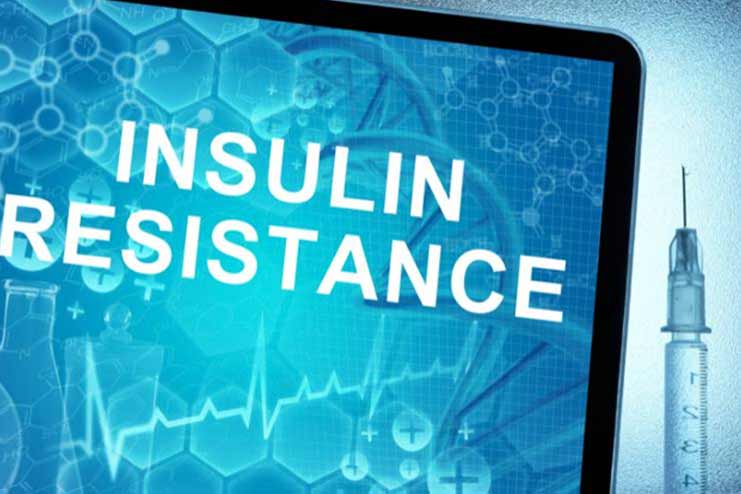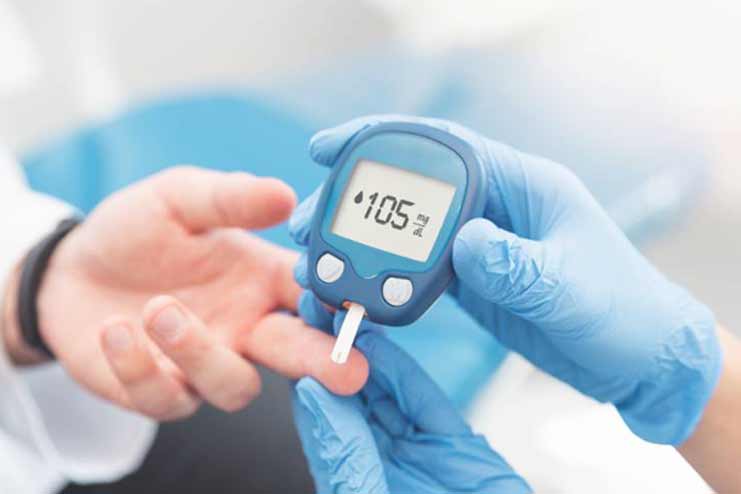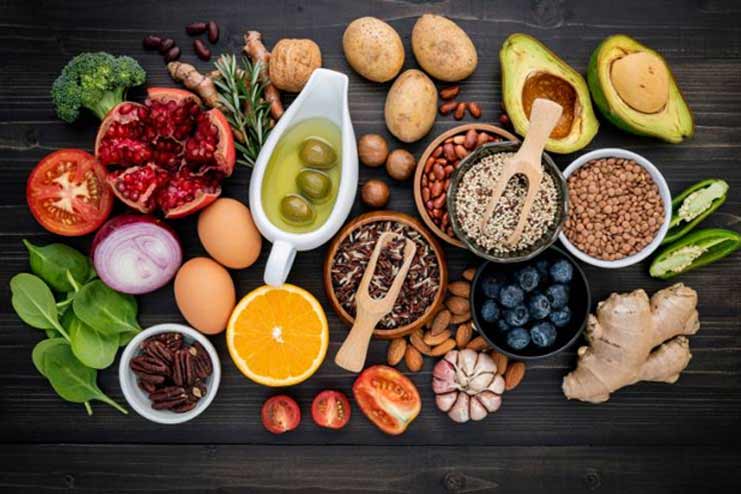Affiliate Disclaimer
Some links in this article are affiliate links. We may earn a small commission if you make a purchase through these links, at no extra cost to you. We only recommend products we find useful to our readersInsulin resistance affects millions worldwide, and people can be insulin-resistant for about 20 years before they become diabetic. Insulin resistance is linked to Metabolic Syndrome, a cluster of biochemical and physiological symptoms, such as high blood glucose, high blood pressure, high triglycerides, and abdominal obesity, which may cause cardiovascular disease and type 2 diabetes.
Over time, untreated insulin resistance leads to elevated blood sugar levels, which may develop into pre-diabetes or Type 2 diabetes and raise the risk of diseases such as strokes, heart disease, fatty liver, cancer, neuropathy, and inflammation.
It is easier to prevent and reverse insulin resistance early on than to do it after you are diabetic. Managing insulin resistance early on is one of the most effective ways to prevent the onset of diabetes.
Untreated insulin resistance over time leads to elevated blood sugar levels, which may develop into Type 2 diabetes and raise the risk of diseases such as stroke, fatty liver, cancer, neuropathy, inflammation, heart attack, and other complications.

In this article, we explore what insulin resistance is, why it is crucial to treat it, how it affects your body, and, most importantly, practical lifestyle changes you can make to reverse and prevent it.
What is Insulin?
Insulin is a hormone released by the pancreas when it detects the presence of glucose in the bloodstream and is essential for regulating blood glucose (sugar) levels. When your body ignores signals from the hormone insulin to process the glucose in your blood, you have insulin resistance.
Let’s first take a look at how insulin functions under normal circumstances.
- First, the food we eat is digested and converted into glucose. Glucose is essential because it is a vital source of energy for our body’s muscle, fat, and liver cells.
- As we eat, the glucose levels in our bloodstream start to rise, triggering the pancreas to begin releasing insulin.
- Insulin attaches itself to receptors on the surface of our body’s cells and enables the glucose to enter muscle, fat, and liver cells so they can use it for energy or store it for later use.
- As glucose begins to enter the cells, glucose levels in the bloodstream start to drop, and the pancreas receives a signal to stop insulin production.
Under normal circumstances, insulin regulates blood sugar levels by allowing glucose to enter cells for energy or to store it for later use.
What is Insulin Resistance?

Insulin resistance, also known as impaired insulin sensitivity, happens when your body resists secreted insulin. Cells in your muscles, fat, and liver don’t respond as they should to insulin and can’t effectively absorb glucose from your blood.
This means high levels of sugar remain in the blood, triggering the pancreas to make more insulin. This is called hyperinsulinemia.
- An excess of insulin in the body can lead to:
- Weight gain, which makes insulin resistance worse
- Higher triglyceride levels
- A hardening of the arteries
- High blood pressure
As long as the pancreas can make enough insulin to overcome the cells’ weak response to insulin, blood sugar levels will stay in a healthy range.
Over time, the cells that produce insulin become worn out and stop secreting enough insulin. Leading to elevated blood sugar levels which, over time, develop into prediabetes and Type 2 diabetes.
What Causes Insulin Resistance?
What causes your cells to become resistant to insulin? There is currently no clear consensus, but some factors believed to cause insulin resistance include:
- Excess body fat
- Belly fat
- Lack of physical activity
- Diet high in added sugars and processed foods
- Certain Medications
- Specific genes
- Aging
What are Some Signs and Symptoms of Insulin Resistance?

As long as your pancreas keeps producing insulin to manage your blood glucose levels, you may not see any specific signs and symptoms. It’s when your pancreas starts to get worn out, and produces less insulin, is when you might see clear signs and symptoms, by which point, you may be pre-diabetic or diabetic.
Here are some early signs to watch for:
- Visible skin tags on neck, armpits, and body
- Darkening with dark Patches, velvety skin under your arms or on your neck or groin
- Changes in vision or blurry vision
- Blood glucose level over 100 milligrams per deciliter (mg/dL) reading in the morning i.e fasting blood glucose level
- Fasting triglyceride level over 150 mg/dL
- Increased waist obesity i.e. a waistline over 40 inches in men and 35 inches in women
- Higher blood pressure readings of 130/80 or higher
- Lethargy
- Brain fog
- Increased hunger and/or extreme thirst
- Frequent urination
- Wounds that heal slowly
How Can You Prevent and Reverse Insulin Resistance?
Insulin resistance is a growing concern, with predictions that by 2050, most of the population will be either pre-diabetic or type 2 diabetic.
To combat insulin resistance, we must first limit our glucose intake levels and, second, improve our body’s insulin sensitivity. Here are eight actionable steps you can take to prevent and reverse the onset of insulin resistance.
1. Eat Dinner Early

Aim to have your dinner by 5 pm every day. Studies show early, time-restricted eating enhances metabolic health, glucose regulation, weight loss, and sleep quality.
2. Ensure Adequate Sleep

Sleeping less than 7 hours a night can increase insulin resistance. Too little or low-quality sleep can disrupt the body’s sleep-wake or circadian rhythm, thereby influencing glucose metabolism. Disrupted sleep can also alter hormone levels and affect appetite.
Improve your sleep habits by:
- Maintaining a consistent sleep-wake schedule
- Creating a comfortable, quiet, cool, and dark sleep environment
- Keeping your electronics such as phones, tablets, and computers away before bedtime
- Avoiding late afternoon naps, say after 3:30 PM
- Regularly exercising
- Having an early and light dinner
- Avoiding alcohol before bed
Read More: Importance of Sleep Hygiene: Creating Your Ideal Sleep Environment
3. Drink Plenty of Water

Dehydration can cause transient insulin resistance. When you’re dehydrated, your blood sugar tends to rise. High blood sugar itself contributes to insulin resistance, creating a cycle.
Proper hydration is essential for maintaining healthy blood sugar levels. Aim to drink 8 to 10 glasses of water daily.
Read More:
4. Eat Healthy Foods

Eat more protein and less sugar and carbohydrates. Eliminate refined sugars and carbs from your diet as much as possible. Eat high-fiber foods, these help manage your blood sugar because they keep you feeling full for a long time.
Going grain-free and sugar-free, combined with exercise, will improve your insulin resistance.
The glycemic index (GI) ranks foods based on how quickly they raise your blood glucose. Low GI foods have a small, slow impact on your blood glucose. Try to eat these foods often.
Some examples of Low GI Foods are:
- Legumes (like peanuts or lentils)
- Nuts
- Fresh fruits
- Fresh or frozen vegetables
- Whole grains such as quinoa or low-processed grains
- Greek yogurt and regular yogurt
- Leafy greens
- Eggs
Related Article: 12 Best Glucose Meter For Keeping Your Sugar Levels In Control
5. Be Active

Being active improves how well your body uses insulin and physical exercise can lower blood glucose levels.
A simple and easy way to be active is to increase your steps. Aim to increase your step count to 10,000 steps a day. A sedentary lifestyle, like sitting at our desks, computers, and devices, is detrimental to our general health, so get out and take those extra steps – this will help you prevent insulin resistance.
Find an activity you enjoy so you’ll be more likely to do it often. Aim for at least 30 minutes of moderate activity (like brisk walking) five or more days a week.
Do Zone 2 Cardio. It’s a low-level aerobic activity where you exert yourself but can still talk. Get on a bike or go for a run. If you can’t run, swimming is a great alternative cardio exercise that is good for your heart.
6. Do Strength Training

More skeletal muscle is important because we lose so much muscle as we age. A catabolic crisis can occur after a fall or surgery, and then you have to work extra hard to regain the muscle that you have lost.
If there’s one thing we wish we could tell our younger selves, it would be to strength train regularly. Try to fit in three to four sessions of strength training per week. times a week, whatever you can fit into your schedule.
The earlier you start, the better metabolically. Your skeletal muscle is your biggest helper for being insulin-sensitive.
Read: Top 10 Essential Strength Training Equipment for Home Workouts
7. Manage Stress

Scientific research shows that stress impairs glucose balance through different molecular pathways. Our busy lifestyles have stressed out many of us, and we should practice stress management techniques to combat anxiety and to help regulate our hormones.
Some of the best ways that you can manage your stress is by taking a break, having a breathing practice, a gratitude practice, focusing on all the good things in your life, and not focusing on the negative.
Take 10 minutes to light a candle, breathe, write a journal, or do whatever works for you. Having that kind of positive practice, focusing on and seeing yourself in a positive light activates a cascade of chemicals and a proper physiological response that will calm your nervous system.
Relaxation strategies that may help manage stress include:
- Regular meditation in the morning
- Deep breathing exercises
- Listening to soothing music and focusing on relaxation
- Visualizing calming objects, scenes, or events to help relax your body
- Muscle relaxation
Even if your life is stressful, have a practice of activating positivity. Positivity keeps you from having blood sugar spikes, so practice positivity – we highly encourage it.
HS recommended articles:
- Spirituality For Stress Relief ! What’s The Tie-In? Awaken Your Mind!
- 7 Good Ways To Relieve Stress Naturally
8. Intermittent Fasting

Fasting is excellent for blood sugar regulation. It’s also a great way to rest your digestive system and burn belly fat.
To prevent insulin resistance, train yourself to do intermittent fasting. You could start with a 14 or 16-hour fast, and build up to a 24-hour fast – which looks like going from dinner until dinner. You could eventually try a 36 or 48-hour fast.
There are different levels and types of fasts. You can do it strictly with water, but you can also do a fast with bone broth, electrolytes, and other low-calorie liquids that have nutrients in them, but no food.
The goal should be to consume less than 200 calories daily. Starting a practice of 24-48 hours of intermittent fasting will change your life.
Read More: New Study Shows Intermittent Fasting As A Possible Cure For Type-II Diabetes
In conclusion, reversing and preventing insulin resistance is achievable through simple lifestyle changes. By adopting a balanced diet rich in whole foods, engaging in regular physical activity, managing stress effectively, and ensuring adequate sleep, individuals can significantly improve their insulin sensitivity.
These proactive measures not only help regulate blood sugar levels but also reduce the risk of developing type 2 diabetes and other associated health complications.
Related Article:
- 14 Effective Ways Of Preventing Blood Sugar Spikes For Better Health
- Important Tips To Maintain Normal Blood Sugar Level


References
- https://my.clevelandclinic.org/health/diseases/22206-insulin-resistance
- https://nyulangone.org/news/study-finds-eating-meals-earlier-improves-metabolic-health
- https://www.ncbi.nlm.nih.gov/pmc/articles/PMC9889728
- https://www.webmd.com/diabetes/insulin-resistance-syndrome
- https://www.niddk.nih.gov/health-information/diabetes/overview/what-is-diabetes/prediabetes-insulin-resistance
In this Article

















